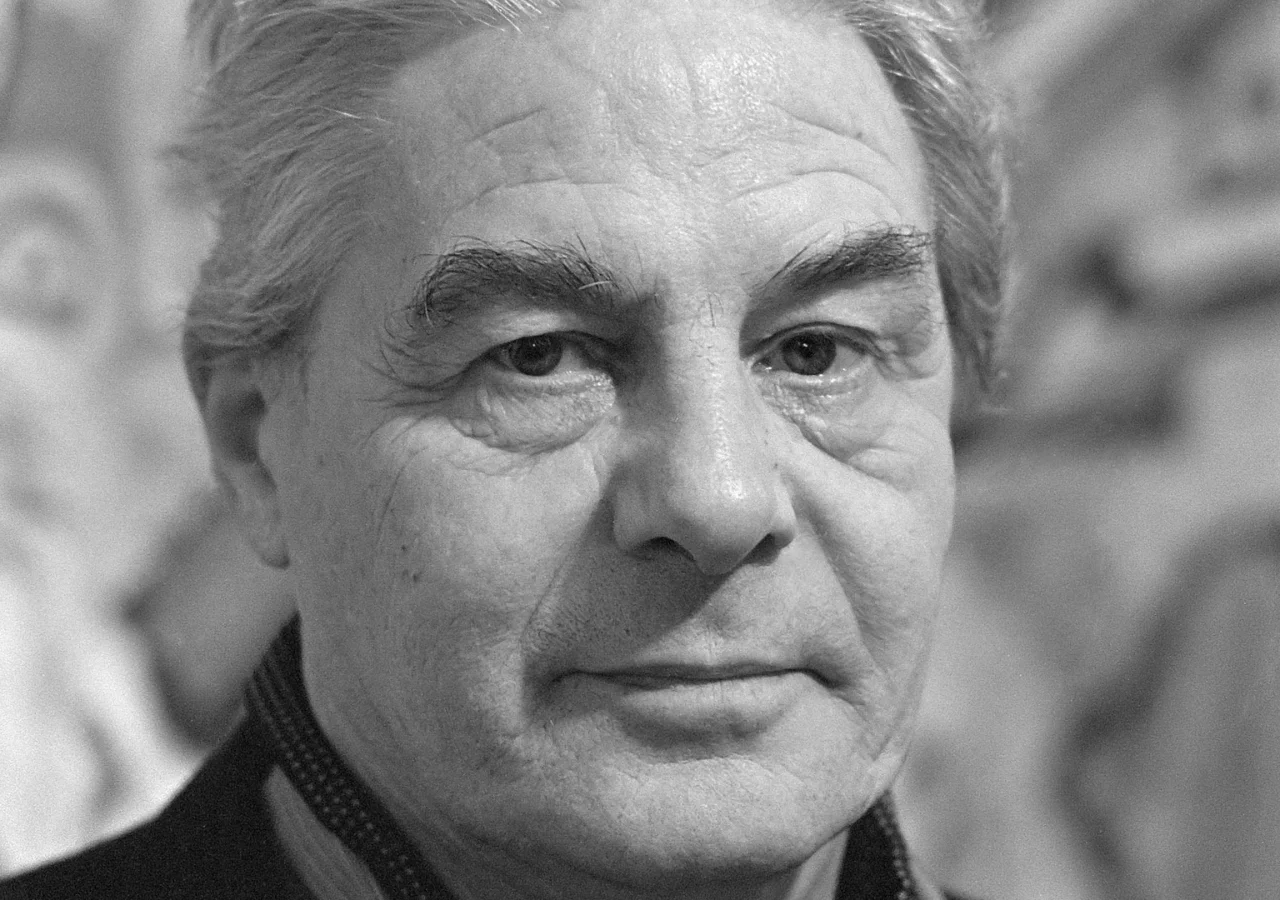His innovative perspective and bold experimentation have influenced generations of artists worldwide. The deep connection that the artist Lucebert had with Spain, particularly with the region of Jávea and Benitatxell, is reflected in his work and personal life, and has been a source of inspiration in his artistic production. This bond with Spain materialized in the construction of his house-studio, a place that was not only his home but also a space for creation.
Lucebert, the Emperor of the Fifties
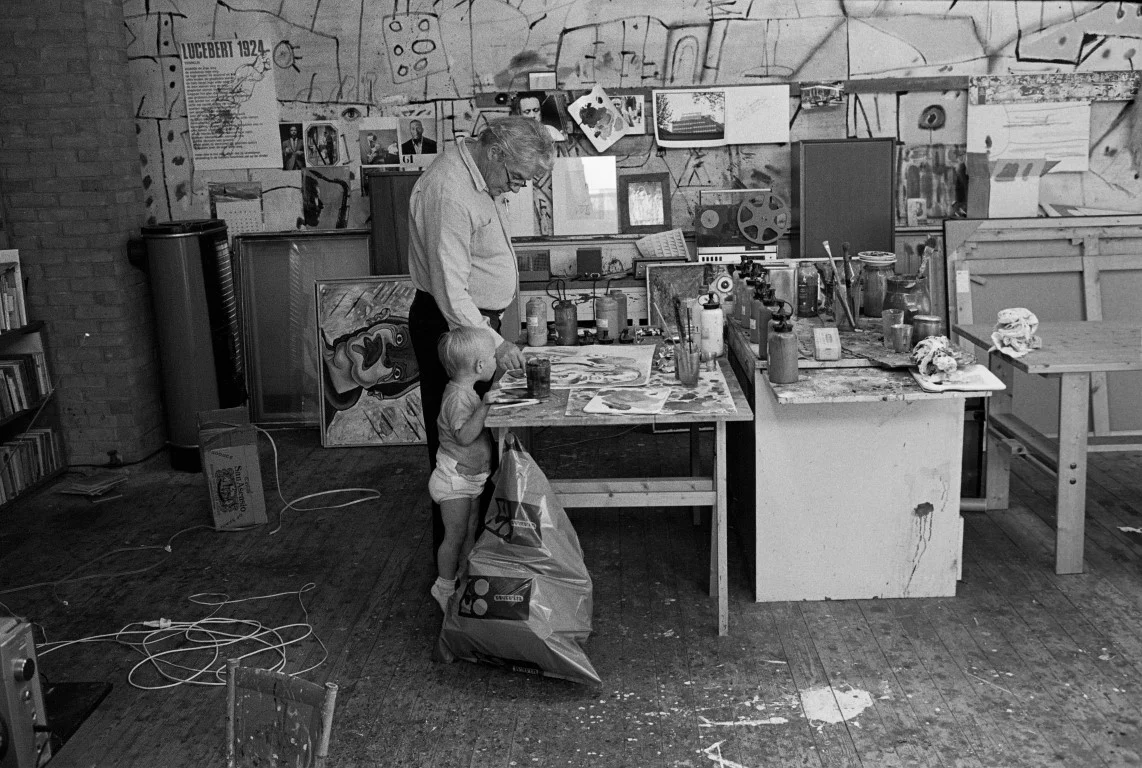
Lucebert, born as Lubertus Jacobus Swaanswijk, was a central figure in post-war art and literature in the Netherlands. He was born in Amsterdam on September 15, 1924, and died in Alkmaar on May 10, 1994. He is known as one of the great poets of the CoBrA movement, a European artistic collective active between 1948 and 1951, characterized by a spontaneous and experimental approach to art, largely inspired by the artistic expressions of children and non-Western cultures. Lucebert was dubbed the Keizer van de Vijftigers (The Emperor of the Fifties), in reference to his influence on Dutch poetry of the 50s and 60s. His poetry, deeply innovative and marked by his anti-authoritarian philosophy, marked a radical shift in the literary tradition of his country, incorporating elements of surrealism, lyricism, and social criticism.
In addition to his literary work, Lucebert boasts a large number of artistic works of all kinds. He worked in a wide variety of mediums, including painting, sculpture, ceramics, collage, and photography. Many of his visual works reflect the influences of the CoBrA movement, with their use of vibrant colors, abstract shapes, and a dynamic and spontaneous energy. Throughout his career, Lucebert explored themes of the human condition, nature, and the relationship between art and society. His work continues to be highly recognized and respected, and continues to influence generations of artists and writers.
Lucebert's Life in Jávea
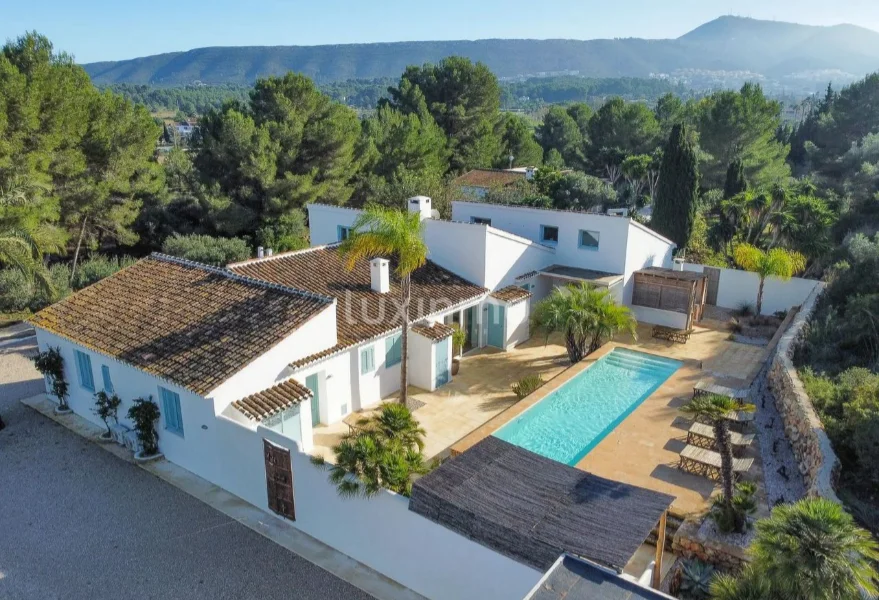
Lucebert and his wife Tony Swaanswijk (born as Tony Koek), first came to Spain in 1963, specifically to Altea, attracted by the Mediterranean light and the presence of many Dutch artists. In 1968, they moved to Jávea, and five years later, they bought a house in the Lluca area, a part of Benitatxell on the old road between this town and Jávea. During this time, he lived between Bergen (Holland) and his house in Spain, creating a large number of works that reflected his creativity and talent.
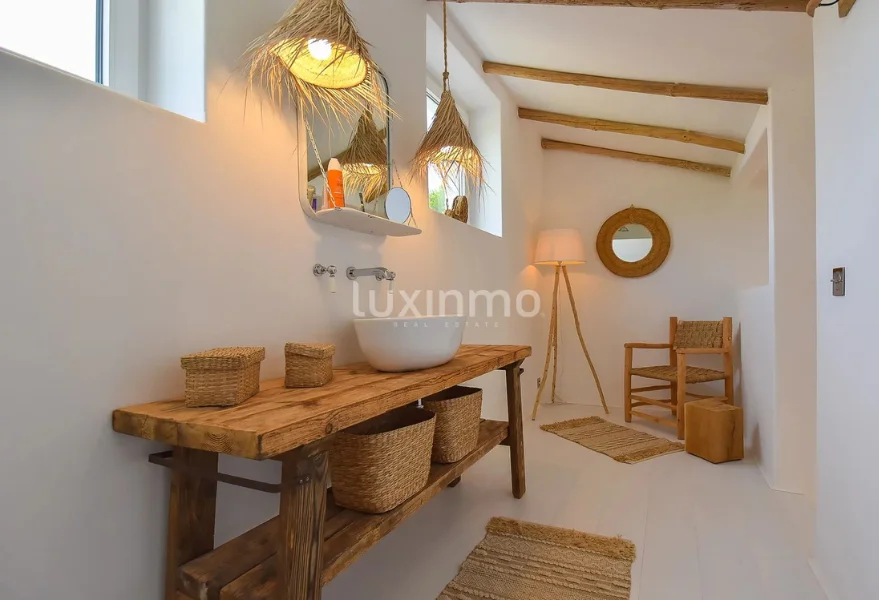
The estate on which his house was located is currently for sale. It comprises two individual houses and covers nearly a hectare of land, surrounded by nature. In the main house, which originally belonged to Lucebert, features include a spacious kitchen with dining area and fireplace, a spectacular 60 m2 living room with a fireplace, and various rooms, including two that were built in the artist's old studio. This connection with the Costa Blanca was reflected in his work Javea from 1969, a work on paper made with ink, ink wash, marker, pencil, gouache, and collage.
In Jávea, an exhibition of Lucebert's works was held, titled Alles van waarde is weerloos (All that is valuable is defenseless), a monographic exhibition to honor the life and work of Lucebert, which included his works dated between 1957 and 1994. This exhibition provided a comprehensive view of Lucebert's creative activity and coincided with the projection of his film, Tijd en Afscheid, which showcased all artistic facets of the Dutch artist. Most of the works came from a donation that his widow Tony made to the IVAM (Valencian Institute of Modern Art) in 2003, essential for the organization of this exhibition.
Lucebert's strong relationship with Spain was also reflected in his close relationship with the artist and art collector Antonio Pérez, with whom he coincided in Paris and Spain. In this case as well, Lucebert's widow, Tony, made a donation to the Antonio Pérez Foundation in Cuenca, which included a room dedicated to Lucebert, intended to exhibit part of the donation.
Lucebert's Literary Art
Lucebert is widely recognized for his lasting impact on poetry and the visual arts. As a prominent figure of the CoBrA movement (1948-1951), his works challenge traditional conventions and seek to explore new forms of expression.
In terms of his poetry, Lucebert is known for his rich imagery and bold use of language. His poems often challenge conventional structure and meter, and his use of neology and wordplay results in poetry that is, at once, perplexing and captivating. His first volume of poetry, Apocrief / De analphabetische naam (1952), contains a series of poems showcasing his ability to manipulate language and create a unique literary landscape.
Jazz also had a significant influence on the work of the celebrated Dutch poet, especially in his poems, which he preferred to describe as spreekgedichten (spoken poems), focusing on rhythm and metronome. This connection with jazz is clearly reflected in a quote from a research text by Jan van Gilst:
However, rhythm is very important in my poems. I'm guided by rhythm, bop. Bop scatting is the funniest thing there is. Unfortunately, I can't do it, but I wish I could...
In fact, Lucebert dreamed of reincarnating as a saxophonist. He had a vast collection of over a thousand LPs related to jazz and blues, demonstrating the significant influence this musical genre had on his work.
As for his prose, Lucebert has also made significant contributions. While he is less known for his prose than for his poetry, his works in this genre are also highly original and experimental. His novel De zeer oude zingt (The very old sings) is an example of his prose style, characterized by the same type of wordplay and linguistic innovation found in his poetry. In addition, it's important to note that Lucebert has also worked extensively in the field of theater. His work De lachende derwisj (The laughing dervish) is an example of his innovative approach and challenging of theatrical conventions, demonstrating his ability to combine text with visual and musical elements.
The Pictorial and Visual Work of Lucebert
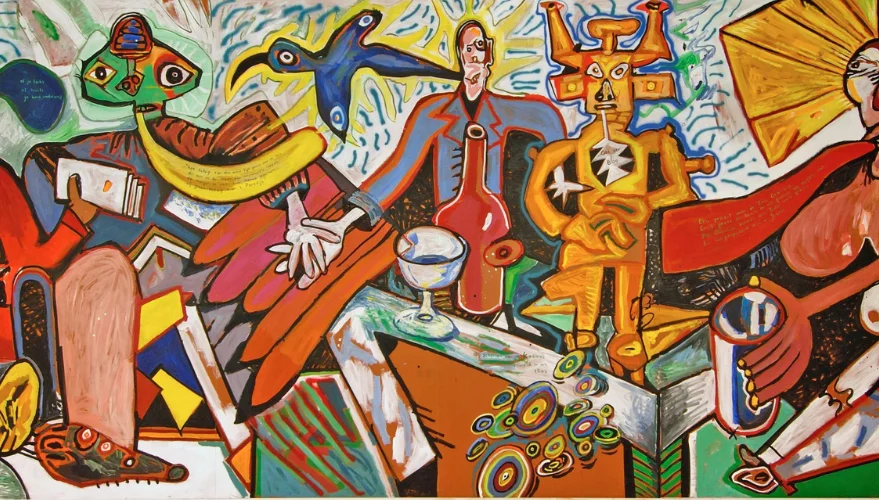
Lucebert was a prolific visual artist, and his work spanned a wide variety of media and styles. Among his most notable works are Verloofd (1959), The Red Boy (1992), Danseuse (1987), Bode (1987) and De kinderen van de clown (1985).
His work often challenged conventions and explored new forms of expression. For example, Der gestrenge luftikus (1994) and "91 XIII 8" (1991) are distinctive pieces reflecting his innovative approach. Lucebert's work also displayed a strong tendency towards symbolism and narration. Wild West Amazone (1969), De onheilsprofeet (The Prophet of Doom, 1965), En hij opende hem de ogen (And He Opened His Eyes, 1973), Le songe (The Dream, 1967), De gelofte (The Vow, 1988), and Javea (1971) are testimony to this.
Throughout his career, Lucebert maintained a consistent commitment to experimentation and the exploration of new forms of visual representation, making him a standout figure in 20th-century art.
What was the CoBrA movement?
The CoBrA movement, an avant-garde artistic and literary group, emerged in Western Europe after World War II, specifically in 1948. The name CoBrA is derived from the initials of the founding members' home cities: Copenhagen (Co), Brussels (Br), and Amsterdam (A).
CoBrA was formed in response to the prevailing currents of the time, particularly Surrealism and Abstract Art. The movement sought a new language of expression, one that was more spontaneous, direct, and that reflected human emotions and experiences in a more authentic way. The formation of the group was also a reaction to the devastation of World War II, and their aim was to create a new kind of art that reflected hope and renewal. CoBrA members were known for their rejection of traditional art rules. Rather than adhering to conventions of "high" art, they sought inspiration in "low" art forms, such as children's art, primitive art, folk art, and art by the mentally ill. They believed these art forms were more authentic and free from the restrictions of tradition.
In terms of aesthetics, CoBrA works are often characterized by their intense use of color, abstract shapes, and spontaneity. CoBrA artists also did not focus solely on one specific type of art: they typically moved between a wide variety of media, including painting, sculpture, ceramics, poetry, and prose.
Although the CoBrA movement only officially lasted until 1951, it had a lasting impact on art and literature. The group members continued to work and influence the arts long after the movement officially ended. The legacy of the movement can be seen in its influence on contemporary art and its challenge to traditional conventions of art and literature.
Latest blog entries
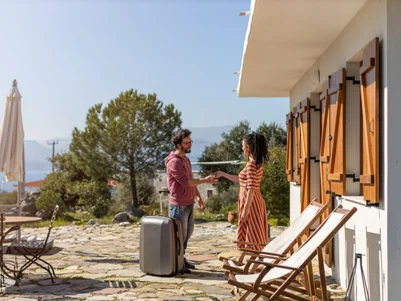
Tourist Rental Law in the Valencian Community (2025): Complete Guide
19 November, 2025

Exclusive Apartments on the Top Floor: Benefits, Lifestyle and Market Trends on the Costa Blanca & Ibiza
31 October, 2025
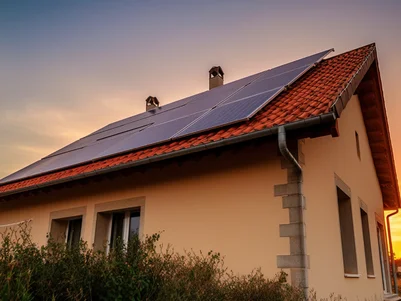
Solar energy on the Costa Blanca: profitability and added value for luxury homes
29 October, 2025
